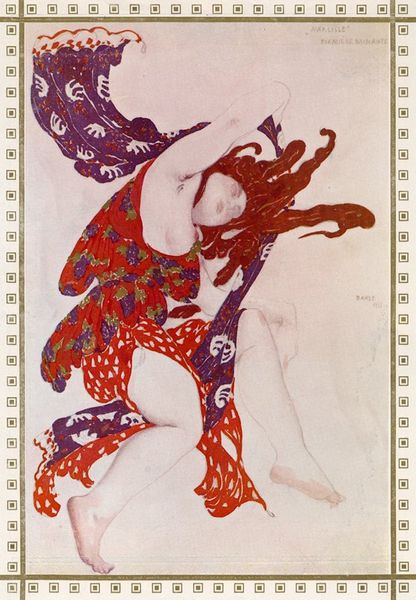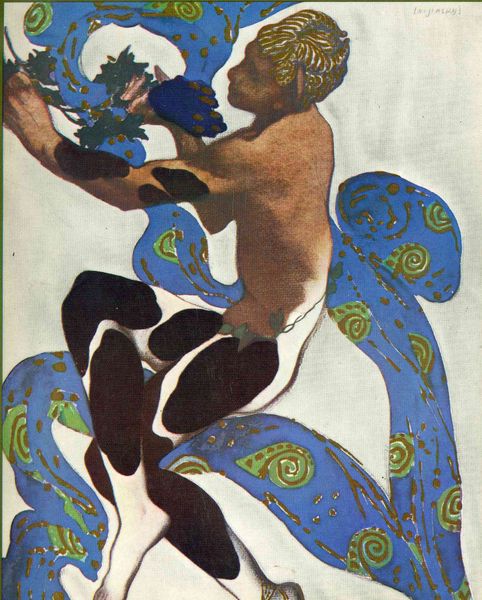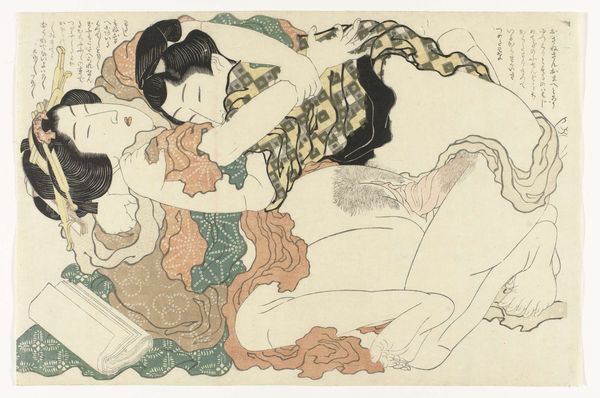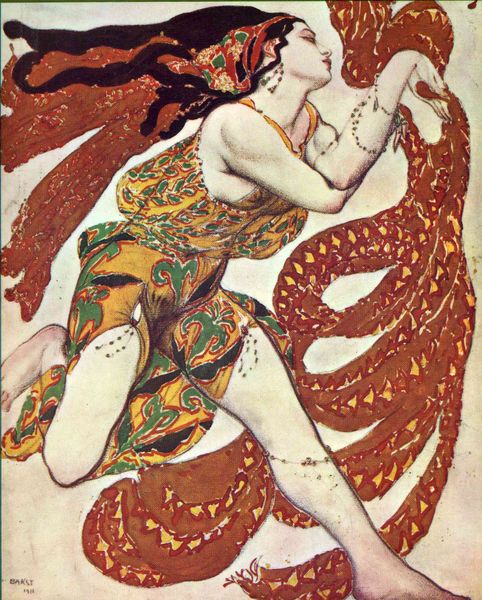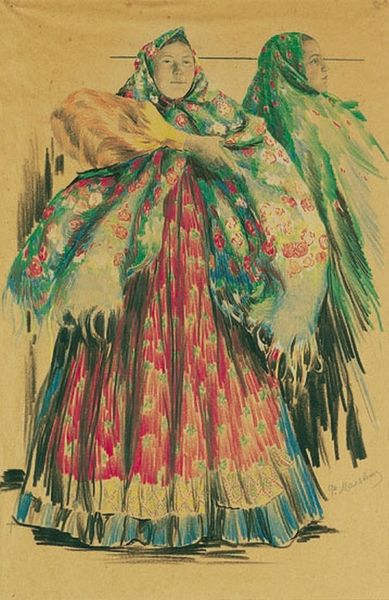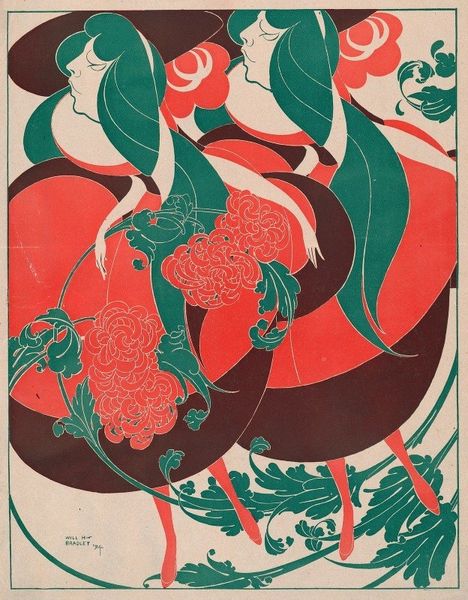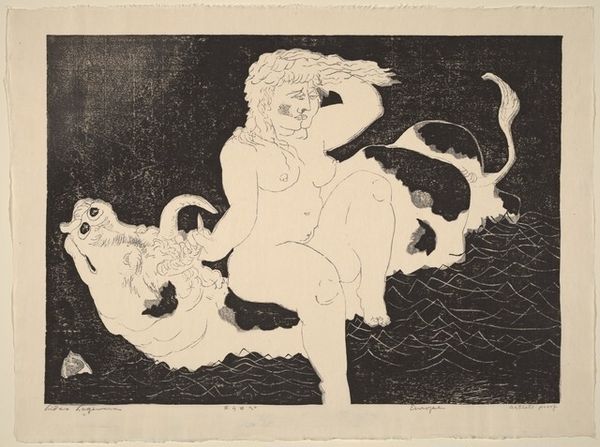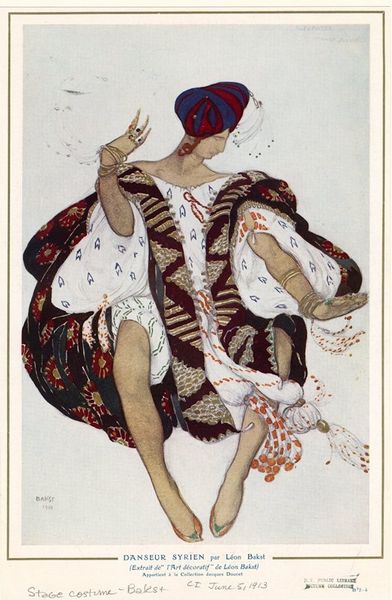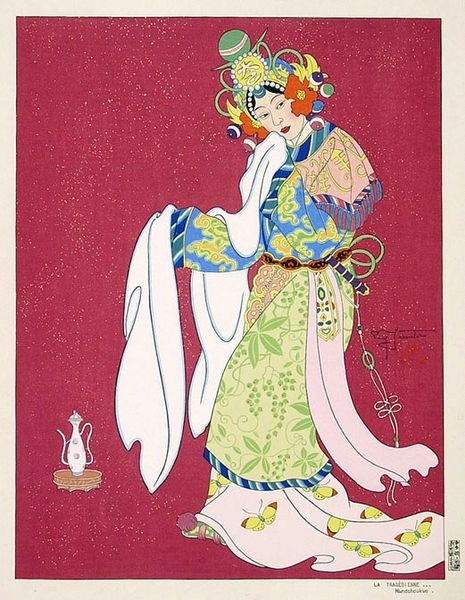
drawing, watercolor
#
portrait
#
drawing
#
art-nouveau
#
landscape
#
caricature
#
figuration
#
watercolor
#
naive art
#
watercolour illustration
Copyright: Public Domain: Artvee
Editor: Here we have Léon Bakst’s 1911 watercolor and drawing, "Narcisse." The colors and flowing lines create an immediate impression of movement and almost dreamlike state. What compositional elements stand out to you in this piece? Curator: Certainly, the interplay between line and color is paramount. Observe how Bakst employs sinuous, curvilinear lines characteristic of Art Nouveau to define form and to dictate movement within the composition. Notice the contrasting color palettes applied to each figure; how do they serve to differentiate, and perhaps to unify, these characters formally? Editor: It almost feels like the color palettes place them in separate realms, despite their proximity in the image. Do you think that affects our interpretation? Curator: Perhaps. However, before interpretation, consider how color itself operates structurally. Blue and orange, primary and secondary colors respectively, set up a visual dichotomy, and we should ask what it communicates in formal terms about pictorial balance and unity. Are the colors complementary? Are they harmonizing, or dissonant? And how does the application of each hue–its intensity and texture—affect your visual perception of volume and space? Editor: I see how focusing on these choices shapes the figures; their poses feel so much more dynamic when considering color and line. It gives the artwork a unique kind of energy. Curator: Precisely. The work privileges visual construction over narrative literalness; therefore, engaging directly with the intrinsic formal properties illuminates its artistic logic. Editor: I’ve learned a lot from considering the color and lines so closely today. Curator: As have I; formal analysis invites continued engagement.
Comments
No comments
Be the first to comment and join the conversation on the ultimate creative platform.
